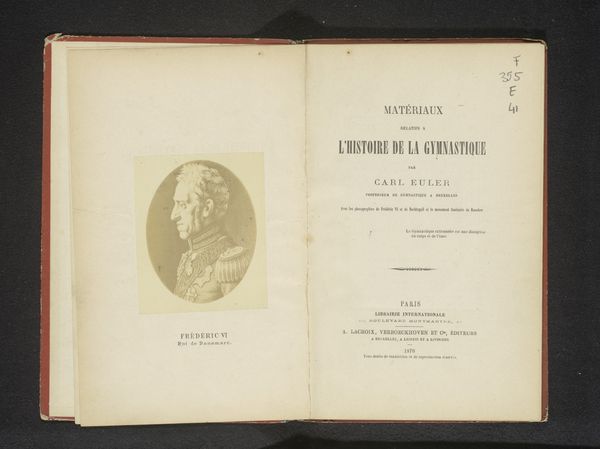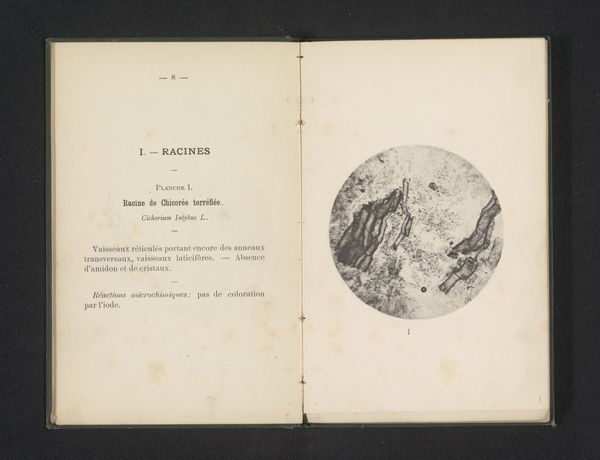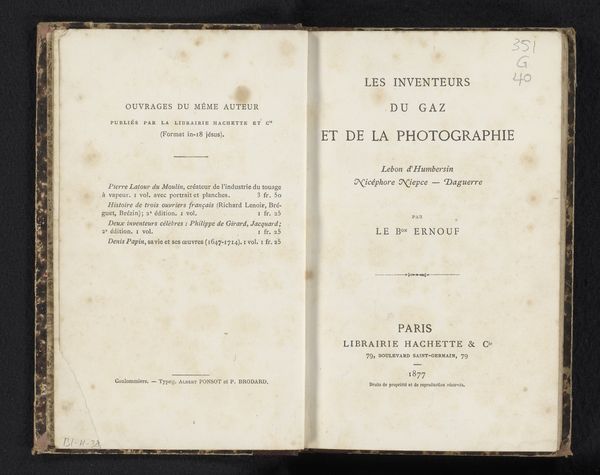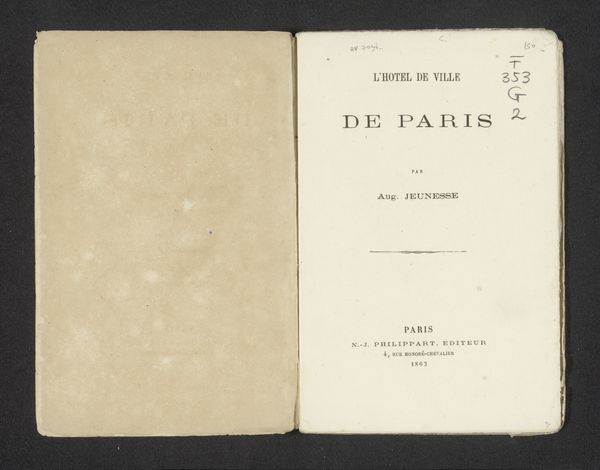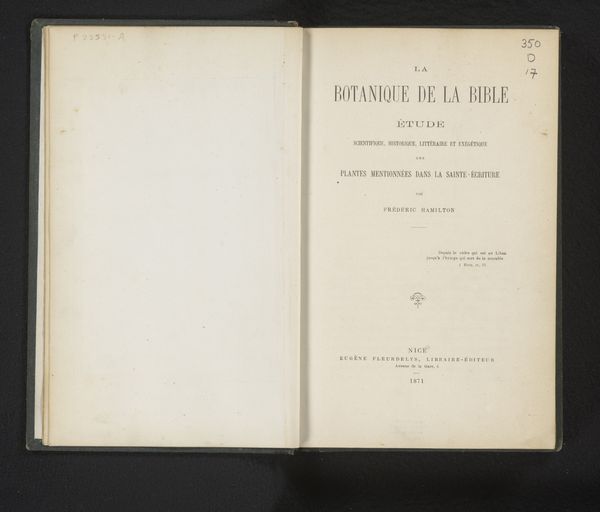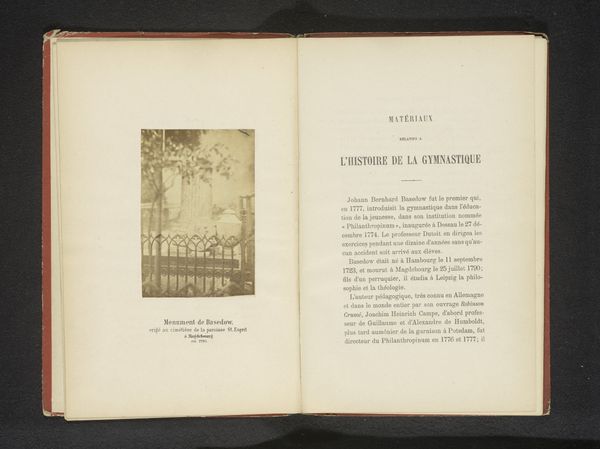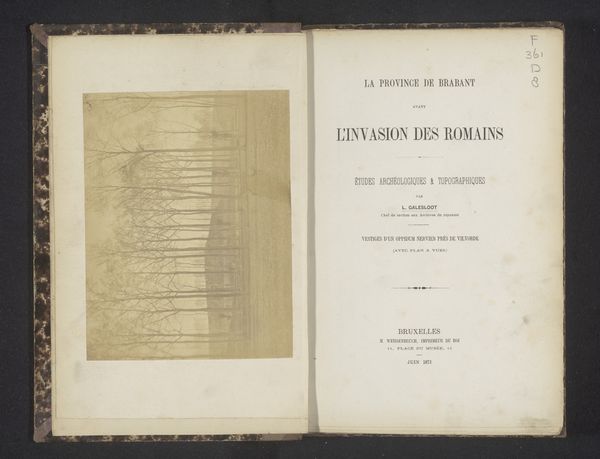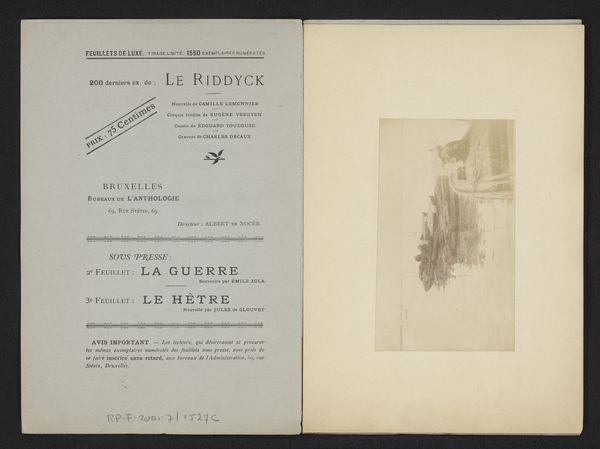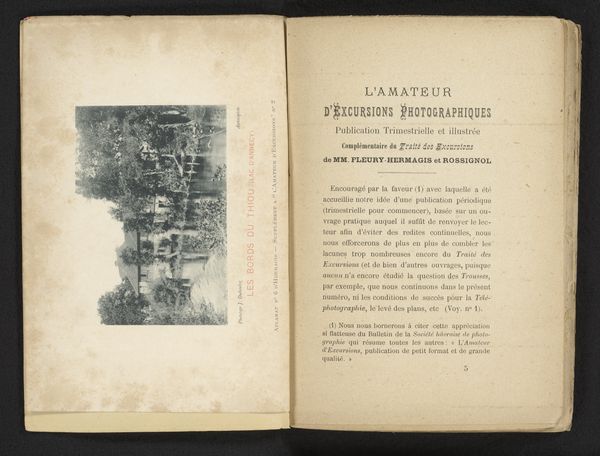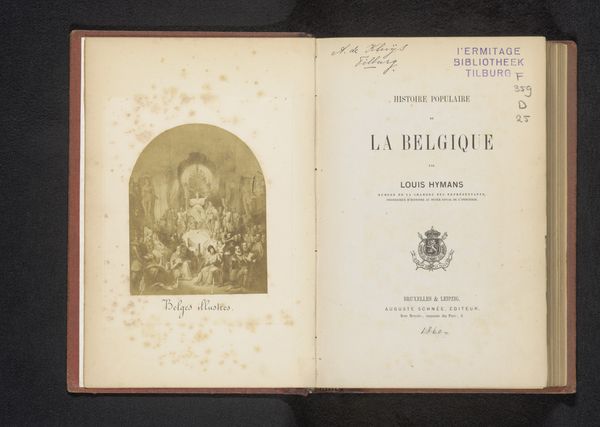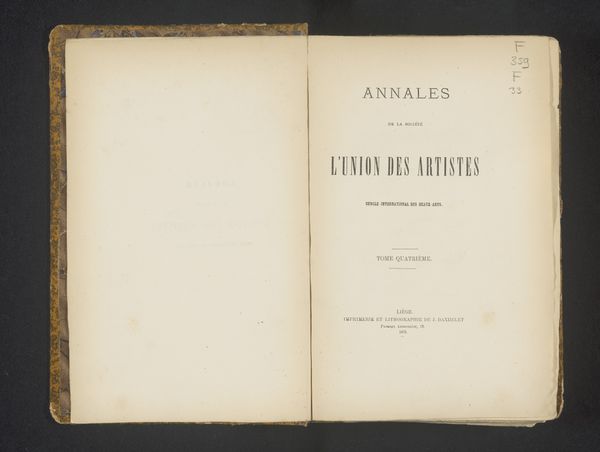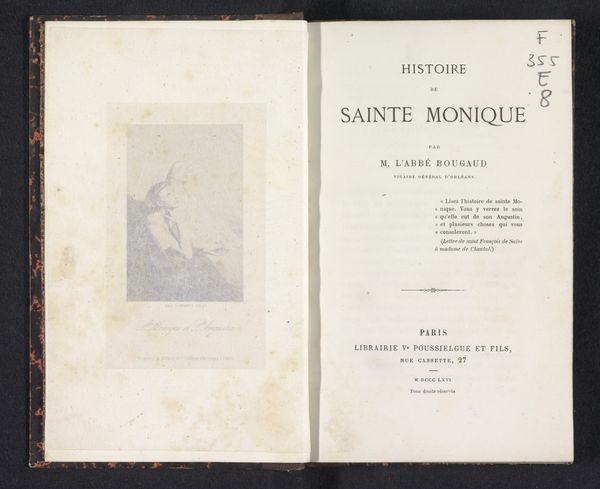
Un bois de la cambre à Anvers : aperçu sur les avantages et sur l'utilité de la transformation du domaine de Lipeloo en une promenade rurale 1882
0:00
0:00
print, paper, photography
#
aged paper
#
homemade paper
#
paper non-digital material
#
paperlike
# print
#
sketch book
#
landscape
#
personal journal design
#
paper
#
photography
#
personal sketchbook
#
journal
#
thick font
#
letter paper
Dimensions: height 194 mm, width 128 mm, thickness 5 mm
Copyright: Rijks Museum: Open Domain
Curator: We are looking at a very interesting unbound print from 1882. The artwork, by J. Maton, is entitled "Un bois de la cambre à Anvers : aperçu sur les avantages et sur l'utilité de la transformation du domaine de Lipeloo en une promenade rurale." It consists of two facing pages, almost like an open book. Editor: The contrast immediately strikes me. The page on the right is dominated by text, imposing and almost clinical, while the left shows an image – a delicate, almost ethereal scene from within the woods. The sharp delineation makes me think about form and the structure of communication. Curator: It’s interesting that you mention “clinical,” as this piece exists as part of a larger history concerning urban planning and landscape architecture. The text actually outlines a proposal for converting an estate into a public rural promenade with a focus on Arboriculture. We’re witnessing the intersection of bureaucratic vision and its intended impact on public space. Editor: From a formal perspective, consider the type. It’s a very rigid typeface and structured in tiers, drawing the eye downwards. The opposing landscape photo is hazy, obscured, offering a recessive visual depth. This play on sharpness is deliberate, don't you think? Curator: Quite. The photography serves to romanticize the idea of the rural, while the print makes tangible its administrative backbone. Look at where it was printed, the Imprimerie Jos. Dorix, that really places this firmly within a historical context of publishing in Anvers. Editor: Also, notice the borders. The photographic page is clearly defined, sectioned off almost. Whereas the printed page just fades. This has a psychological implication—an enforced focus contrasting with boundlessness. The content acts second to how it is viewed. Curator: Indeed, the content takes a subservient position. It seems the print overall intends not simply to inform, but persuade and gain the audience's approval of city reform through textual design, carefully placed next to images with high appeal. Editor: And that hazy imagery...it hints at idealized, romantic views while the text delivers hard, unemotional facts. It’s a battle for our attention! Considering design techniques, how successfully would you rate the aesthetic persuasion used to influence social and political acceptance? Curator: Pretty efficient. Even in our contemporary setting, these layout devices still retain power over viewers. It makes us aware of how planning initiatives still depend upon such well planned, carefully placed rhetorical techniques. Editor: Fascinating how this single print prompts so much conversation even today, offering insights into our current day relationships. It demonstrates how successful manipulation techniques never fall victim to the decay of time.
Comments
No comments
Be the first to comment and join the conversation on the ultimate creative platform.
